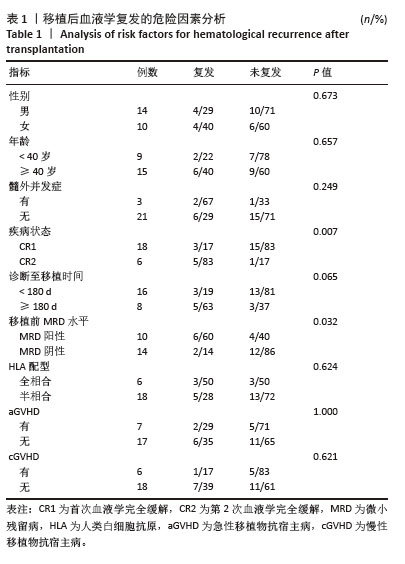[1] CHALANDON Y, THOMAS X, HAYETTE S, et al. Randomized study of reduced-intensity chemotherapy combined with imatinib in adults with Ph-positive acute lymphoblastic leukemia. Blood. 2015;125(24):3711-3719.
[2] SHAHZAD M, HUSSAIN A, TARIQ E, et al. Outcomes of Tyrosine Kinase Inhibitors Maintenance Therapy with or without Allogeneic Hematopoietic Stem Cell Transplantation in Philadelphia Chromosome Positive Acute Lymphoblastic Leukemia in First Complete Remission: A Systematic Review and Meta-Analysis. Clin Lymphoma Myeloma Leuk. 2023;23(3):178-187.
[3] CANDONI A, RAMBALDI A, FANIN R, et al. Outcome of Allogeneic Hematopoietic Stem Cell Transplantation in Adult Patients with Philadelphia Chromosome-Positive Acute Lymphoblastic Leukemia in the Era of Tyrosine Kinase Inhibitors: A Registry-Based Study of the Italian Blood and Marrow Transplantation Society (GITMO). Biol Blood Marrow Transplant. 2019;25(12):2388-2397.
[4] PFEIFER H, CAZZANIGA G, VAN DER VELDEN VHJ, et al. Standardisation and consensus guidelines for minimal residual disease assessment in Philadelphia-positive acute lymphoblastic leukemia (Ph + ALL) by real-time quantitative reverse transcriptase PCR of e1a2 BCR-ABL1. Leukemia. 2019;33(8):1910-1922.
[5] 张之南,郝玉书,赵永强,等.血液病学[M].2版.北京:人民卫生出版社,2012:719-730.
[6] 中国抗癌协会血液肿瘤专业委员会,中华医学会血液学分会白血病淋巴瘤学组.中国成人急性淋巴细胞白血病诊断与治疗指南(2021年版)[J].中华血液学杂志,2021,42(9):705-716.
[7] XU LP, LU PH, WU DP, et al. Hematopoietic stem cell transplantation activity in China 2019: a report from the Chinese Blood and Marrow Transplantation Registry Group. Bone Marrow Transplant. 2021; 56(12):2940-2947.
[8] BADAR T, NARRA R, MIMS AS, et al. Impact of induction regimens intensity and allogeneic stem cell transplantation on survival of patients with Philadelphia chromosome-positive acute lymphoblastic leukemia: A multi-institutional study. Am J Hematol. 2024;99(12):2388-2391.
[9] 王洋,徐晓曼,张民,等.费城染色体核型和异基因造血干细胞移植对急性淋巴细胞白血病患者疗效的影响[J].中国实验血液学杂志,2022,30(5):1397-1406.
[10] 曹星玉,马薇,张薇,等.酪氨酸激酶抑制剂时代完全缓解状态下Ph染色体阳性急性淋巴细胞白血病异基因造血干细胞移植预后分析[J].中华血液学杂志,2020,41(7):564-569.
[11] GOOPTU M, KIM HT, HO VT, et al. A Comparison of the Myeloablative Conditioning Regimen Fludarabine/Busulfan with Cyclophosphamide/Total Body Irradiation, for Allogeneic Stem Cell Transplantation in the Modern Era: A Cohort Analysis. Biol Blood Marrow Transplant. 2018;24(8):1733-1740.
[12] KHIMANI F, DUTTA M, FARAMAND R, et al. Impact of Total Body Irradiation-Based Myeloablative Conditioning Regimens in Patients with Acute Lymphoblastic Leukemia Undergoing Allogeneic Hematopoietic Stem Cell Transplantation: Systematic Review and Meta-Analysis. Transplant Cell Ther. 2021;27(7):620.e1-620.e9.
[13] 王萌,张靖岚,邢海洲,等.移植前微小残留病状态对行异基因造血干细胞移植的急性淋巴细胞白血病患者预后的影响[J].中华实用诊断与治疗杂志,2023,37(2):124-128.
[14] 王志东,李思琦,孙于谦,等.微小残留病阳性提示异基因移植前疾病状态处于完全缓解2及以上的急性淋巴细胞白血病患者的预后欠佳[J].中华检验医学杂志,2021,44(12):1145-1152.
[15] GOLDSMITH SR, SLADE M, DIPERSIO JF, et al. Donor-lymphocyte infusion following haploidentical hematopoietic cell transplantation with peripheral blood stem cell grafts and PTCy. Bone Marrow Transplant. 2017;52(12):1623-1628.
[16] VAN DER ZOUWEN B, KOSTER EAS, VON DEM BORNE PA, et al. Feasibility, safety, and efficacy of early prophylactic donor lymphocyte infusion after T cell-depleted allogeneic stem cell transplantation in acute leukemia patients. Ann Hematol. 2023;102(5):1203-1213.
[17] NAGLER A, LABOPIN M, DHOLARIA B, et al. Second allogeneic stem cell transplantation in patients with acute lymphoblastic leukaemia: a study on behalf of the Acute Leukaemia Working Party of the European Society for Blood and Marrow Transplantation. Br J Haematol. 2019; 186(5):767-776.
[18] CHOI Y, CHOI EJ, LEE JH, et al. Second allogeneic hematopoietic stem cell transplantation in patients with acute leukemia relapsed after allogeneic hematopoietic stem cell transplantation. Clin Transplant. 2021;35(3):e14199.
[19] TAN X, WANG XQ, ZHANG C, et al. Donor-derived CD19 CAR-T Cells versus Chemotherapy Plus Donor Lymphocyte Infusion for Treatment of Recurrent CD19-positive B-ALL After Allogeneic Hematopoietic Stem Cell Transplantation. Curr Med Sci. 2023;43(4):733-740.
[20] WILLYANTO SE, ALIMSJAH YA, TANJAYA K, et al. Comprehensive analysis of the efficacy and safety of CAR T-cell therapy in patients with relapsed or refractory B-cell acute lymphoblastic leukaemia: a systematic review and meta-analysis. Ann Med. 2024;56(1):2349796.
[21] LIU S, DENG B, YIN Z, et al. Combination of CD19 and CD22 CAR-T cell therapy in relapsed B-cell acute lymphoblastic leukemia after allogeneic transplantation. Am J Hematol. 2021;96(6):671-679.
[22] BADER P, ROSSIG C, HUTTER M, et al. CD19 CAR T cells are an effective therapy for posttransplant relapse in patients with B-lineage ALL: real-world data from Germany. Blood Adv. 2023;7(11):2436-2448.
[23] CHAUVET P, PAVIGLIANITI A, LABOPIN M, et al. Combining blinatumomab and donor lymphocyte infusion in B-ALL patients relapsing after allogeneic hematopoietic cell transplantation: a study of the SFGM-TC. Bone Marrow Transplant. 2023;58(1):72-79.
[24] SMITH K, FATHOALA D, ANTHIAS C, et al. Venetoclax-based salvage for management of relapsed acute leukaemia after allogeneic haematopoetic stem cell transplant: durable remissions only seen following consolidation with donor lymphocyte infusion or second transplant. Bone Marrow Transplant. 2023;58(10):1152-1156.
[25] LI Q, LYU C, LIU M, et al. Donor Hematopoietic Stem Cell/Lymphocyte Maintenance Treatment After CAR T-Cell Therapy in Patients With B-Cell Acute Lymphoblastic Leukemia Relapse Following Stem Cell Transplant. Cell Transplant. 2023;32: 9636897231158155.
[26] MINCULESCU L, REEKIE J, PETERSEN SL, et al. Donor Lymphocyte Infusion Is a Feasible Way to Improve Survival in Patients with Acute Myeloid Leukemia and Myelodysplastic Syndromes Who Relapse after Allogeneic Stem Cell Transplantation. Acta Haematol. 2024;147(3):
325-332.
[27] TAN JL, CURTIS DJ, MUIRHEAD J, et al. CD34 Chimerism Directed Donor Lymphocyte Infusion With or Without Azacitidine Results in Reduced Relapse and Superior Overall Survival When Full Donor Chimerism is Achieved in Allogeneic Stem Cell Transplant Recipients With Acute Myeloid Leukaemia/Myelodysplastic Syndrome. Clin Lymphoma Myeloma Leuk. 2024;24(11):e852-e860.
[28] GUO W, ZHANG H, ZHENG Y, et al. Prophylactic therapy using epigenetic agents for RUNX1::RUNXT1-positive high-risk AML after Allo-HSCT. Ann Hematol. 2024;103(8):3155-3163.
[29] 李渊,王冰洁,刘微,等.达沙替尼联合化疗序贯异基因造血干细胞移植治疗Ph染色体阳性急性淋巴细胞白血病的临床分析[J].中国实验血液学杂志,2020,28(1):18-23.
[30] WARRAICH Z, TENNETI P, THAI T, et al. Relapse Prevention with Tyrosine Kinase Inhibitors after Allogeneic Transplantation for Philadelphia Chromosome-Positive Acute Lymphoblast Leukemia: A Systematic Review. Biol Blood Marrow Transplant. 2020;26(3): e55-e64.
[31] GUAN F, YANG L, CHEN Y, et al. Comparison of long-term outcomes between imatinib and dasatinib prophylaxis after allogeneic stem cell transplantation in patients with Philadelphia-positive acute lymphoblastic leukemia: A multicenter retrospective study. Cancer. 2024;130(12):2139-2149.
|
